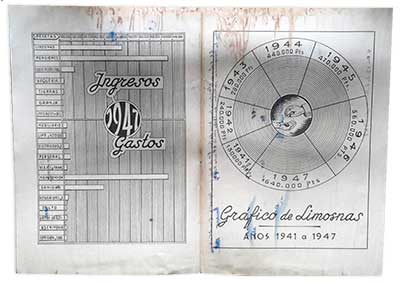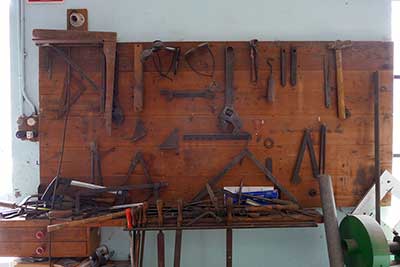The catalogue of the Fontilles historical archive
By Antonio García Belmar (University of Alicante)
The historical archive of the Fontilles Sanatorium holds rich and complete documentation and material records. They bear witness to the history of a century-old institution and to the lives of the thousands of people who inhabited it during this time, some of them still living there.
The archive is composed of around two hundred boxes of documents and more than one hundred and fifty log books providing a wealth of detailed information on the sanatorium's institutional, accounting, patrimonial, medical, scientific, religious, social and human history. Its numerous documentary series include the minutes books of the Government Body and the Board of Trustees, the sanatorium's highest governing bodies; abundant correspondence between the managers and directors with health institutions, public bodies and individuals; statutes and regulations that determined its legal identity and internal operating rules; financial balance sheets and documentation on the institution's assets as well as financial and accounting activity; projects, plans and reports related to the sanatorium's architectural and landscape history; records relating to staff recruitment, organisation and remuneration; documentation concerning Jesuits and Franciscan sisters; records of care work entrusted to hundreds of volunteers; or the laboratory notebooks and records, bearing witness to the clinical assistance, research and training work performed by the medical staff.
This documentary series on the running of the institution and its staff is complemented by documentation referring to thousands of people who were admitted to the sanatorium or who received outpatient medical treatment. The latter consists, on the one hand, of records referring to income, discharges and deaths, as well as the administrative records of their stays, among others; and, on the other hand, of the medical records of all persons admitted or treated since its opening in 1909. This material has notable historical value due to its characteristics and the type of information it provides. It is subject to particular conditions of conservation and consultation.
A summary inventory has been made of this documentary archive; it describes the content and basic dates of the files and folders contained in the numbered bundles. They can be consulted at the Fontilles Archive headquarters. The records are currently being catalogued and digitised, which will make them easier to consult and access in the future. Parts of the series will also be accessible online through this portal. This is the case, for example, of the series of one hundred and thirty-five plans of the sanatorium buildings and their associated technical reports. A selection of these plans is already searchable. Another example is the series of statistical studies - that includes clinical, social and cultural data collected on people admitted to the sanatorium since its foundation - and the collection of tables and graphs produced in these studies. The latter were drawn and coloured by the sanatorium's staff by hand.
The activities relating to research, medical care, work and leisure carried out by Fontilles inhabitants for over a century constitute a rich material heritage that bears witness to the way these people lived and the goals of the institution that housed them. These materials include: instruments, utensils, equipment, diagnostic, reactive and prepared tests used in clinical care and laboratory research tasks accomplished by the sanatorium's medical and care staff; tools and machines used in workshops to learn and practice trades; physical remnants of the technical infrastructures the sanatorium used throughout its history; objects linked to leisure and artistic expression activities performed by people who spent a part of their lives in the sanatorium. These objects, that were scattered around the sanatorium's warehouses, basements, offices and units for years, have been recovered and stored in special units, to preserve and catalogue them. The end result will be a collection of objects consultable in situ and a catalogue accessible through this portal.




